Introduction
Cabbage and vermicelli, a humble yet versatile pairing, has graced dinner tables across Asia for generations. This dish, often stir-fried to perfection, balances the crisp texture of cabbage with the silky softness of vermicelli noodles, all coated in a savory sauce that tantalizes the taste buds. What makes this recipe truly shine is its adaptability—it can be a quick weeknight meal, a vegetarian delight, or a crowd-pleasing side dish. Whether you’re a seasoned home cook or a novice in the kitchen, mastering this dish requires minimal effort but yields maximum flavor. In this guide, we’ll explore the secrets to elevating this simple combination into a culinary masterpiece, from selecting the freshest ingredients to perfecting the stir-fry technique.
The Foundation: Ingredients and Their Roles
Every great dish begins with quality ingredients. For cabbage and vermicelli, freshness is non-negotiable. Let’s break down the key components:
- Cabbage: Opt for a firm, compact head with crisp leaves. Green cabbage is classic, but Napa cabbage offers a milder, sweeter flavor. Avoid wilted or yellowing leaves, as they indicate age and bitterness.
- Vermicelli Noodles: Also known as glass noodles or mung bean threads, these translucent noodles absorb flavors beautifully. Soak them in warm water until pliable but not mushy—overcooking here is a common pitfall.
- Aromatics: Garlic and ginger form the flavor backbone. Fresh is best; their pungent aroma mellows into a fragrant base when sautéed.
- Protein (Optional): Ground pork, shrimp, or tofu add heft. For a vegetarian twist, mushrooms or edamame work wonders.
- Sauce: A blend of soy sauce, oyster sauce (or vegetarian oyster sauce), sesame oil, and a pinch of sugar creates umami depth. Adjust ratios to taste—some prefer a saltier kick, others a hint of sweetness.
- Oil: Use a neutral oil like vegetable or canola for stir-frying. Reserve sesame oil for finishing to preserve its delicate aroma.
Step-by-Step Cooking Guide
Prepping the Ingredients
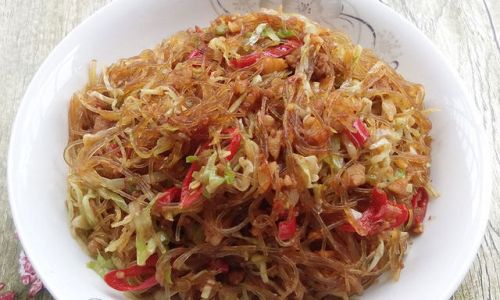
- Cabbage: Remove the core, then shred the leaves into thin ribbons. A sharp knife ensures even slices, promoting even cooking.
- Vermicelli: Soak in warm water for 10-15 minutes. Drain and snip into manageable lengths with kitchen shears to prevent clumping.
- Aromatics: Mince garlic and ginger finely. For a rustic texture, leave some pieces slightly coarse.
- Protein: If using meat, marinate it briefly in soy sauce and cornstarch for tenderness. Tofu should be pressed and cubed; mushrooms sliced.
Stir-Frying Technique
Stir-frying is a dance of heat and timing. Use a wok or large skillet over high heat to achieve that coveted wok hei (breath of the wok).
- Heat the pan until smoking, then add oil. Swirl to coat.
- Sauté aromatics for 30 seconds until fragrant but not browned.
- Add protein (if using) and stir-fry until cooked through. Remove and set aside to prevent overcooking.
- Toss in cabbage with a splash of water. Stir-fry for 2-3 minutes until wilted but still vibrant green. Overcooking here leads to mushiness—resist the urge to walk away!
- Incorporate vermicelli, using tongs to combine gently. Drizzle the sauce mixture evenly, tossing to coat. The noodles will soften and absorb the flavors.
- Reintroduce protein (if set aside) and stir-fry for another minute. Finish with a drizzle of sesame oil and a sprinkle of white pepper.
Plating and Garnish
Transfer to a serving dish and garnish with sliced green onions, toasted sesame seeds, or chili flakes. A squeeze of lime adds brightness, while cilantro offers a fresh herbaceous note.

Tips for Perfection
- Texture Matters: The cabbage should retain a slight crunch. Test by tasting a piece—it should yield gently but not collapse.
- Sauce Balance: Taste and adjust seasonings before serving. A pinch of sugar can mellow overpowering saltiness, while a splash of rice vinegar adds acidity.
- Prevent Clumping: After soaking, toss vermicelli with a teaspoon of oil to keep strands separate.
- Wok vs. Skillet: A wok’s concave shape distributes heat evenly, but a large skillet works if you stir constantly.
- Customization: Experiment with add-ins like shredded carrots, bell peppers, or baby corn for color and crunch.
Variations to Suit Every Palate
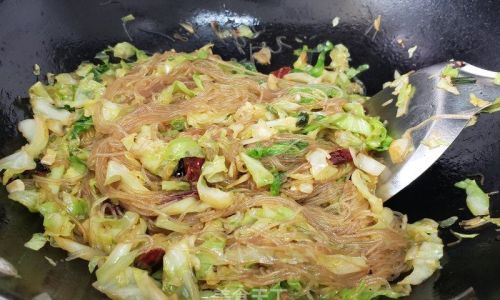
- Spicy Sichuan Style: Add doubanjiang (spicy bean paste) and Sichuan peppercorns for a numbing heat. Garnish with crushed peanuts.
- Vegetarian Delight: Substitute meat with crispy fried tofu or wood ear mushrooms. Enhance with a dash of dark soy sauce for color.
- Seafood Twist: Toss in plump shrimp or squid during the final minutes of cooking. Squeeze lemon juice before serving.
- Korean-Inspired: Finish with gochujang (chili paste) and a fried egg. Serve with kimchi on the side.
- Low-Carb Version: Replace vermicelli with shirataki noodles or zucchini noodles for a lighter take.
Serving Suggestions
- Family Style: Serve as part of a banquet-style meal alongside dumplings, spring rolls, and steamed rice.
- Meal Prep: Portion into containers with a side of quinoa or roasted vegetables for a balanced lunch.
- Party Appetizer: Wrap small portions in lettuce leaves with hoisin sauce for easy finger food.
- Brunch Addition: Pair with a fried egg and avocado slices for a fusion breakfast bowl.
Health Benefits: Nutrition Without Compromise

Cabbage is a nutritional powerhouse, rich in fiber, vitamins C and K, and antioxidants. Its low-calorie content makes it ideal for weight management, while its anti-inflammatory properties support gut health. Vermicelli noodles, made from mung bean starch, offer a gluten-free carbohydrate source with minimal fat. When paired with lean protein like chicken or tofu, the dish becomes a complete meal, balancing macros effortlessly.
Common Mistakes and How to Avoid Them
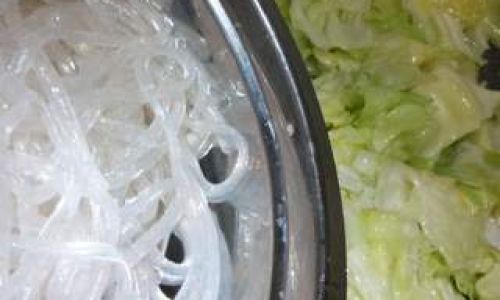
- Soggy Noodles: Over-soaking vermicelli leads to mushiness. Stick to 10-15 minutes in warm water.
- Burnt Aromatics: High heat is key, but garlic and ginger can burn quickly. Keep them moving in the pan.
- Uneven Cooking: Crowding the pan steams ingredients instead of stir-frying. Cook in batches if needed.
- Bland Flavor: Under-seasoning is a common issue. Taste frequently and adjust with soy sauce or a pinch of salt.
- Overcooked Cabbage: Remove from heat while still slightly crisp. Residual warmth will soften it further.
Conclusion: A Dish That Transcends Borders
Cabbage and vermicelli is more than a recipe—it’s a canvas for creativity. Whether you adhere to tradition or experiment with global flavors, this dish rewards curiosity. The next time you crave a meal that’s both comforting and vibrant, remember these tips. With practice, you’ll not only master the technique but also infuse each bite with your personal flair. So grab your wok, sharpen your knife, and let the sizzle of stir-frying fill your kitchen. Bon appétit!
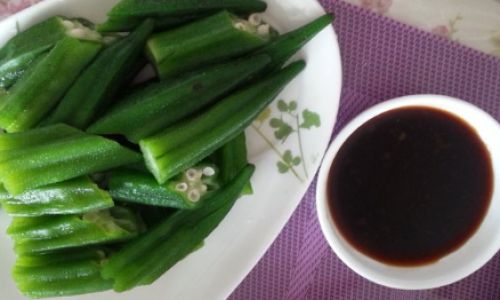
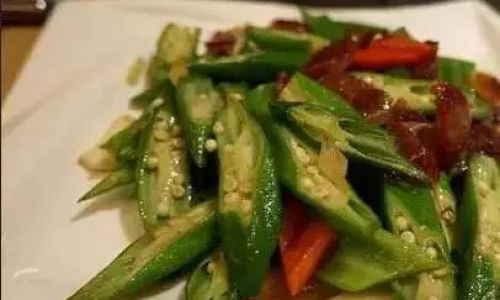



0 comments